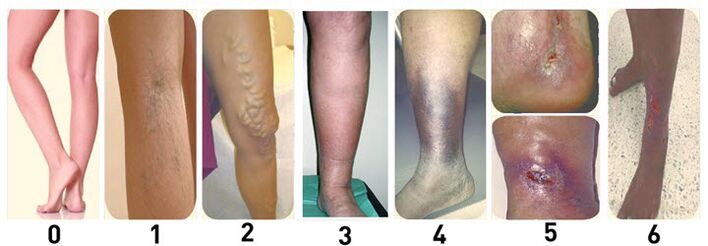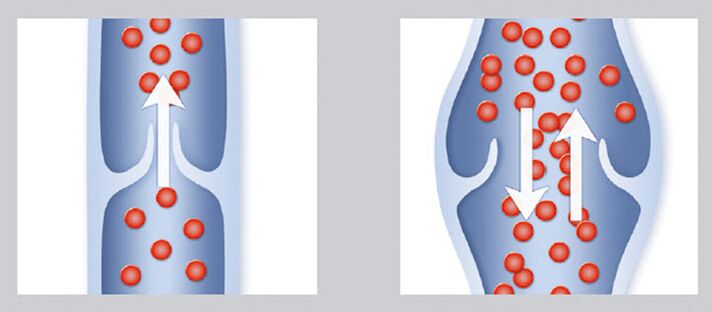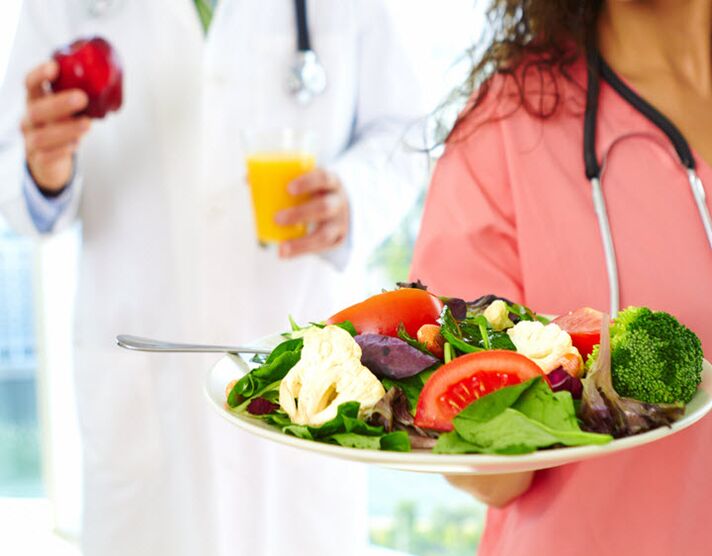Varicose veins in the legs is a chronic disease in which the lumen of the veins increases, which leads to poor circulation in the legs, blood stagnation and swelling. After that, inflammation develops and blood clots form. Treatment of varicose veins with folk remedies is carried out at the initial stage of changes in the veins; Disease progression requires medication. Different stages of the pathological process are presented in the photo.

Effective home recipes
Folk remedies for varicose veins are recommended for use as prophylaxis. They contain natural products and herbs, which allow them to affect the cause of the pathology without harm. The goal of treatment is to increase blood flow by:
- clean blood vessels from cholesterol deposits;
- blood thinning;
- strengthens the vascular wall.
Garlic and lemon
The use of lemon and garlic allows you to achieve positive results at the stage of vascular network formation. The product cleans blood vessels, makes them elastic, and relieves inflammation.
To prepare the composition, squeeze the juice from 6 lemons, add chopped garlic (5 cloves), honey (two glasses) and golden mustache (three leaves). The ingredients are mixed thoroughly. Place in a glass container and store in a dark place for a week. Take the composition every day for 30 days, 4 teaspoons.
You can make compresses and wraps from the mixture. The duration of the procedure if there is no irritation is about one hour.
horse chestnut
Another effective folk treatment for varicose veins is chestnut. Its use is due to the content of tannins, organic acids, vitamins, and flavonoids. For vein pathology, beech tree-based products have an anti-inflammatory, tonic effect, strengthen capillary walls, increase blood flow, and help relieve swelling. To make medicine, not only fruits are used, but also tree inflorescences:
- Dried flowers (4 spoons) and crushed fruits (6 pieces) are poured with 500 ml of alcohol. Leave for 14 days, shaking the vessel frequently. Before use, dissolve 2 tablespoons of the product in 5 tablespoons of water. Napkins are moistened in the resulting solution and wrapped for 2 hours. To enhance the effect, cover with cellophane and wrap a towel over it. During the procedure, you must lie down with your limbs elevated.
- A decoction is prepared from the flowers: pour two spoons with warm water (200 ml), leave for 6 hours in a dark place, then bring to a boil and leave for another hour. Take 75 ml in the morning and evening for 14 days, break for a week, the course of treatment lasts up to six months.
Tinted alcohol taken orally for a month, 30 drops three times a day.

Datura seeds
Datura is used in the fight against varicose veins because of its ability to relieve spasms and inflammation, restore metabolism, and reduce pain. Medicines in the form of tinctures are prepared from plant seeds, one part is poured into a glass container and filled with 5 parts of 70% alcohol. Close the jar tightly, put it in a dark place for a week, shake the contents periodically. Caps are used:
- In the form of a compress for star-shaped and painful areas: 25 ml per 100 ml of water.
- For internal use, 2 drops diluted in water (25 ml) is sufficient. Take three times a day, you can eat after 30 minutes. The course of treatment lasts one month and is repeated after six months.
This medicine is contraindicated if allergies and intolerances occur. It is important not to exceed the dose, because the plant is poisonous, causing vomiting, heart rhythm disturbances, nervous agitation, and hallucinations. During pregnancy, breastfeeding and glaucoma, the use of Datura is strictly prohibited.
Apple cider vinegar
Natural apple cider vinegar includes all the valuable components of apples, but in concentrated form. When used externally, vinegar relieves inflammation, improves blood circulation, and removes swelling. When used internally, antioxidants, acids and enzymes restore metabolism, strengthen blood vessel walls, and remove toxins. For varicose veins, only natural products are used, which are used in the form of:
Compress. Soak a napkin in warm vinegar and apply it to the problem area and hold it until the tissue is completely dry.Wrap up. The gauze is folded into several layers, moistened in a vinegar solution, and the excess liquid is squeezed out. Cloth is spread over the limbs, covered with cellophane on top and covered with a towel.Rub it. Gently soak the sore limb with a cloth soaked in vinegar and let the moisture dry; no need to rinse.
The procedure is carried out lying down, it is necessary to raise the limbs and place cushions under the legs to reduce the load on the veins. For sensitive skin, to avoid irritation, vinegar is diluted with water 1: 1.
For internal use, prepare a solution of honey, vinegar (one teaspoon) and water (200 ml), drink in the morning after going to bed. Apple cider vinegar should not be consumed if there is a gastrointestinal disease, as there is a risk of worsening the disease.
Popular recipes
There are many folk recipes for varicose veins on the legs that can eliminate the signs of pathology. Here are some of them:
- Laundry soap is used in combination with acetylsalicylic acid powder to relieve pain and eliminate vascular defects. To compress, grate soap, knead acetylsalicylic acid (10 tablets) and dissolve in vodka (250 ml). The components are mixed and applied to the painful area, wrapped and kept for 30 minutes.
- An effective remedy for vein inflammation is cabbage leaves, which are used in the form of compresses. It is beaten to release medicinal juice, one side is coated with any vegetable oil and applied to the diseased vein, left for a day. Compressed secured on top with a bandage.
- Ginger for varicose veins involves internal and external use. Tea with the addition of a small piece of root is suitable for the prevention and treatment of vein disease, especially for patients who are overweight. For the compress, spices are grated and mixed with honey. The paste is used for 3 hours, covered with polyethylene and wrapped with a towel on top.
- Compresses of woodlice and burdock help restore lightness to your feet. First, soft wood louse is applied to the diseased limb area, burdock leaves are wrapped on top and tied with a bandage. Woodlice is replaced when the grass dries, burdock - after 2 hours. They do the procedure for a long time until there is an improvement.
In addition, you can use a bath or massage with aromatic oils; juniper, mint, lavender and lemon esters are suitable. Chamomile, almond, peach and rosemary oils have proven themselves well.
Pharmaceutical products
Treatment of ulcers that appear on the legs due to varicose veins involves the prescription of pharmaceutical drugs of local and systemic action.
Venotonic
This group includes phlebotonics; their action is aimed at the microcirculation area of the feet. Medicines increase vein tone, which has a positive effect on muscle contraction. Also, due to increased lymph outflow, swelling disappears. Medicines have the ability to reduce inflammation. Venotonic agents are used to prevent diseases, in course therapy for varicose veins and thrombosis, before and after surgery on veins.
Saponins include horse chestnut, plant extracts made from grape leaves and blueberries. For local use, ointment based on the routine is prescribed.
Blood thinners
Anticoagulants are shown to increase blood flow and prevent blood clots. Glycosaminoglycan products are used topically. Antiplatelet drugs fight blood clotting.
Anti-inflammatory
Internal varicose veins are accompanied by severe pain, inflammation and tissue swelling, and increased temperature. To reduce symptoms, prevent the development of thrombosis and inflammation of the vascular wall, non-steroidal anti-inflammatory drugs are prescribed.
Modern techniques
Treatment options for varicose veins on the legs are varied, the choice of a method depends on the severity of the disease. At the initial stage, an integrated approach is used, which involves wearing compression garments, gymnastic exercises, hirudotherapy, and taking medication. Symptoms and cosmetic defects of small veins are eliminated using minimally invasive procedures - sclerotherapy and laser. Serious problems can be solved with surgery.
Sclerotherapy
This procedure is a minimally invasive method to eliminate varicose veins and is used in the early stages of the disease when spider veins appear. This event involves injecting a sclerosant into the damaged area, which leads to sticking to the vein wall and blocking blood flow. As a result, skin defects disappear without a trace.

Laser method
Laser coagulation involves gluing the vein with a laser beam to stop the blood flow. The operation is carried out in the absence of inflammation and blood clotting, with a smooth passage of the vessel trunk up to 1 cm wide. After local anesthesia, a laser light guide is inserted into the vein through a puncture and, under the control of an ultrasound machine, it moves to the affected area. The energy produced by the emitter is absorbed by the hemoglobin, and the heat produced solders the walls of the cavity.
After the procedure, no bruises or scars remain on the body, and no relapses occur in the area.
Leeches
Hirudotherapy in the treatment of varicose veins is widely used, but it is not recommended to use this type of therapy alone; only a phlebologist should prescribe the procedure. The effect is achieved due to the hirudin peptide content in the leech's salivary glands. Penetrating under the skin, the substance has a therapeutic effect:
- thin the blood;
- prevent thrombosis;
- dilate blood vessels;
- relieves inflammation;
- relieves swelling.
By reducing the amount of circulating blood, annelids eliminate the burden on the leg vessels. Treatment with leeches is allowed in the early stages of the disease, but does not have a lasting effect, so pathological symptoms may recur over time. Leeches are contraindicated for ulcers and injuries.
Surgical correction of the problem
For varicose veins on the lower leg, surgical intervention is indicated if a person experiences severe pain and extensive damage to the vein is diagnosed. When there is a threat of thrombophlebitis, tissue trophism is disturbed and ulcers may form. Surgery aims to remove the affected vein. To carry out the procedure, the doctor chooses an acceptable method depending on the degree of vessel destruction and the complications of the disease.
- Traditional phlebectomy involves ligating the saphenous vein through incisions in the groin and ankle. Then it is pulled out using a rigid probe.
- When removing, part of the vein trunk is removed.
- Miniphlebectomy is one of the least traumatic operations; it allows you to remove the problematic part of the vein through a puncture in the skin. The surgeon inserts a hook into the hole, pulls out the vein, then ligates the vessel and removes the damaged part.
Surgery for varicose veins is an effective treatment method that does not cause recurrence. The technique of performing manipulations has been developed for several decades, so complications are rarely observed.

Diet
A balanced diet for varicose veins helps to normalize the pressure in the blood vessels, reduce the viscosity of the blood and improve its circulation. Proper nutrition ensures the strengthening of blood vessel walls and restoration of tone, reduction of edema and excess body weight. Products recommended for diseases:
- Fruits and berries are a source of valuable elements for the body, vitamins and antioxidants. Vitamins C, A, E are very important.
- Cabbage, carrots, whole grain bread and cereals contain fiber. Fiber is not digested by food enzymes, but it promotes a long-term supply of nutrients, removes toxins and cholesterol from the intestines, and reduces body weight.
- Dried fruits, an alternative to sugar and sweets, help to dilute the blood. Spices such as curry, thyme and ginger have these characteristics.
- It is better to replace animal fat with sunflower or olive oil.
- Beans and legumes are included in the diet as a source of vegetable protein.
- Sea kale is useful for increasing the elasticity of blood vessels: it contains microelements and fiber. In addition, kelp reduces appetite.
- Seafood and fish are rich in protein and easily digestible amino acids.
- It is allowed to eat lean meat. The liver is needed to produce hemoglobin and supply vascular cells with oxygen.
- Lemonade is replaced with freshly squeezed juice and fruit drinks. It is good to brew currant and raspberry leaves.
To remove toxins and restore water balance, it is important to drink water - at least 2 liters a day. It is necessary to eat small meals, not to overeat, especially at night.
To thin the blood, it is recommended to brew herbal tea from lemon balm, raspberry, currant leaves, St. wort. John's wort, linden blossom, mint, and thyme.
To improve the condition of the veins, it is necessary to exclude harmful foods from the diet:
- Alcohol poisons the body, causes swelling, increases blood pressure and damages the vascular system.
- Fat leads to weight gain and cholesterol plaque deposition. This process leads to inflammation of the vein walls, poor circulation, and increases the risk of thrombosis.
- Due to the content of fast carbohydrates, sweets negatively affect body weight and cholesterol production, causing a sharp release of insulin into the blood, tiring the pancreas. As a result, sugar in the body increases.
- It is necessary to reduce your salt intake to avoid excessive fluid retention.
Dangerous foods also include fatty meats, fried foods, canned foods, smoked foods and coffee.
Gymnastics
Gymnastics for varicose veins is part of the prevention and treatment of the disease. Exercise helps to restore blood flow in veins, arteries and peripheral vessels, strengthens muscles, increases the tone of vascular walls, and relieves swelling. Low physical activity leads to stagnation, which is the cause of varicose veins. Therefore, walking, cycling and swimming are recommended for people with vein problems. Before doing therapeutic exercises, you should consult your doctor. Specialists will choose exercises that suit the level of the disease and give recommendations for implementation. The following exercises can be done for the legs:
- In a lying position, lift the limbs alternately. First, it is done lying on your back, then on your stomach.
- The "bicycle" exercise resembles pedaling only in a lying position. Legs are supported.
- Rolling from toe to heel is done up to 20 times.
- Raising your hips high, you need to line up alternately on your toes, then on your heels.
- Stand up straight, while inhaling, slowly rise on your toes, and exhale, returning to the starting position.
- To unload the veins, you need to lie down and relax, raise your legs at an angle of 20°, put a bolster or a pillow. Breathing should be uniform and calm.
Gymnastics is given 15 minutes in the morning and evening with a break of 5 minutes. Do not lift weights or strain your limbs. If it is difficult to do the whole complex, you should start with simple movements.


















